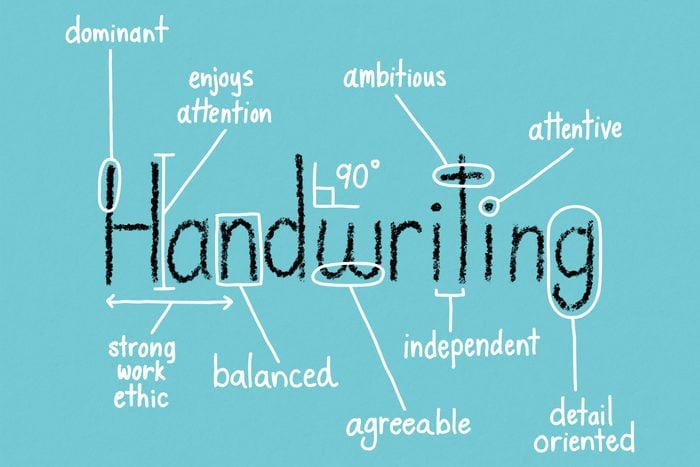
The art of handwriting analysis
Human beings are complex, often confusing creatures. It can be difficult to understand our own behaviors and motivations, let alone somebody else’s, so we look for clues anywhere we can—including in handwriting. In fact, this seemingly small action can reveal more about your personality than you might think. That’s what makes handwriting analysis, also known as graphology, so fascinating.
“Like body language, handwriting is analyzed in an attempt to gain a deeper understanding of a person’s behavior, motivations or personality,” says Annette Poizner, a certified graphologist, registered social worker and licensed psychotherapist. “But unlike nonverbal gestures, handwriting leaves a trace, making it possible to examine at any time or place.”
More specifically, experts like Poizner analyze the structural elements of a person’s handwriting—such as the spacing, the letter formations and the quality of the ink trail—to gain insights into a writer’s personality. That said, when handwriting analysis is done properly, it never looks at one small personality habit or trait in isolation. “It’s easy to say ‘this means that,’ but that approach is overly simplistic and doesn’t provide a complete picture of someone’s personality,” says Poizner, author of Clinical Graphology: An Interpretive Manual for Mental Health Practitioners. “A good graphologist always uses handwriting analysis alongside other measures, not independently.”
Is handwriting analysis legitimate?
Throughout its existence, some have argued that handwriting analysis is a pseudoscience and shouldn’t be considered a legitimate practice. Technically, graphology lacks the reliability and validity necessary for a procedure to be considered “scientific,” Poizner explains. Rather, it’s considered a “projective technique,” used to learn more about someone’s personality in the context of insight-oriented psychotherapy. In this way, handwriting analysis is similar to interpreting what your dreams reveal about you, which, Poizner points out, is a method some clinicians routinely use, even though it has not been demonstrated to be reliable or valid.
“Graphology—and dream interpretation, for that matter—facilitate insight and self-exploration, advance the therapeutic process by providing food for thought and may provide tentative insights, which clients, themselves, will determine as relevant or not,” she explains. “As such, graphology is not only legitimate but rich and interesting too.” While there are professional organizations that offer training and certification, it’s also a good sign when a graphologist has mental-health training or credentials in a recognized health-care discipline, Poizner adds.
Why is your handwriting so revealing?
When it comes to what handwriting analysis can potentially tell you about a person, Poizner breaks it down into seven categories. It can provide insights into someone’s:
- Personality style
- Level of intelligence
- Cognitive thinking style
- Natural or developed talents (e.g., musical or artistic ability, creative problem-solving skills, social skills, etc.)
- Defining characteristic (e.g., a people person, scholar, detail-oriented perfectionist, culture vulture, etc.)
- Attachment style
- Unconscious motivations (e.g., whether they are guilt ridden, people pleasing, impulsive, prone to anger, repressed, etc.).
“People write in unique and idiosyncratic ways, so it would make sense that those characteristic swirls or scratchings may be expressing facets of the writer’s individuality and personality,” Poizner explains. “But properly trained graphologists know that handwriting analysis is more art than science, and any insights they glean from someone’s handwriting must be confirmed by the writers themselves.”
While it’s interesting to read experts’ assessments of presidents’ handwriting and celebrity signatures, you’re probably more interested in analyzing your own handwriting. (We definitely are!) So we asked Poizner to outline some of the most distinctive characteristics in a person’s writing—and reveal what they mean, according to the interpretive principles of graphology. Read on to see what your handwriting says about you.
Get Reader’s Digest’s Read Up newsletter for more personality insights, humor, cleaning, travel, tech and fun facts all week long.
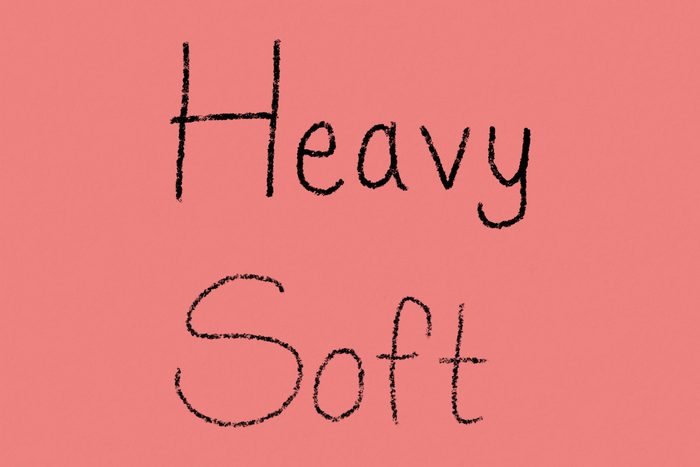
Heavy vs. soft pen pressure
Can you feel the imprints of your handwriting on the other side of the page? If so, that’s a sign that you used heavy pressure, which can be an indicator of intensity, energy and physical strength, as well as forcefulness, aggressiveness, controlling tendencies and/or stress. “Depending on what else we see in the handwriting, we may say this writer has a good constitution, is energetic and enjoys being active,” she says. “In a different writing sample, we may find signs of aggression: someone temperamental, possibly reactive and irritable.”
If your pressure is soft, on the other hand, and features unusually rounded letters, it could be indicative of a yielding, hesitant personality. “This may be somebody who grew up with a dominant or aggressive caretaker or sibling and never learned how to be assertive,” Poizner explains.
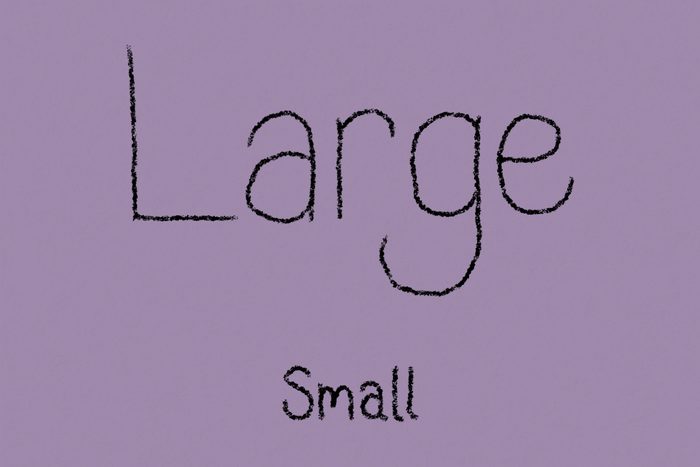
Larger vs. smaller letters
The size of your letters may provide clues about how you wish to be perceived by others. If you write using larger letters, you probably enjoy being the center of attention, Poizner says.
If you consistently use smaller letters, however, you’re likely an introvert. “This is somebody who prefers to take up less space, somebody who possesses a sense of humility, somebody who feels that they have a small but important role to play, somebody who feels small but beloved,” she says. People who write like this also tend to have good concentration skills. For example, says Poizner, Albert Einstein’s handwriting was small, which is indicative of his exceptional ability to concentrate on his work.
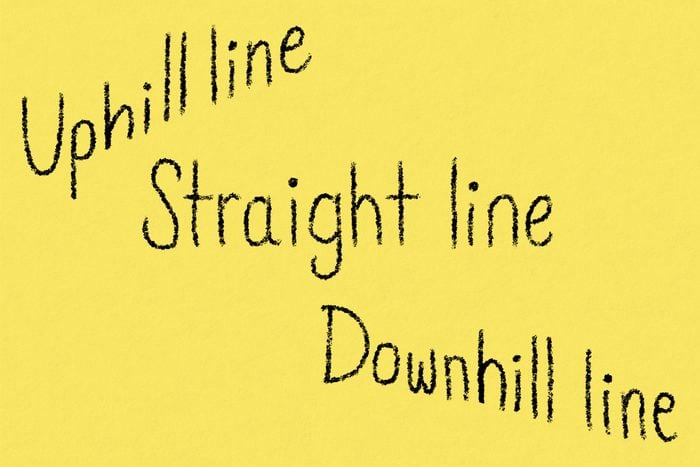
Lines that go downhill, uphill or in a straight line
In Handwriting Analysis: The Complete Basic Book, Karen Amend and Mary Ruiz note that handwriting that gradually slants downward could suggest that a person is experiencing disappointment, unhappiness or discouragement; it could also be a hidden sign of depression. Poizner agrees, adding that it may also indicate a lack of energy. “Former prime minister of Israel Menachem Begin suffered from depression, and his signature was a classic example of that,” she notes.
Handwriting that moves uphill over the course of a line may signal optimism, enthusiasm and ambition. According to Poizner, “astronaut Sally Ride’s signature, which slants upward, is an example of this.”
Finally, someone who can write in a straight line without needing some type of guidance on the page to do so “demonstrates a strong work ethic, a good constitution and the ability to steward energy in a way that makes one reliable and consistent.”
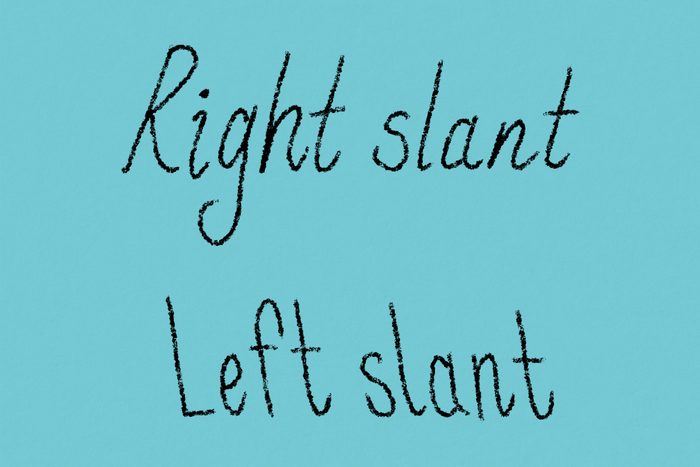
Words slanted to the right vs. the left
Words that are slanted to the right or left may offer clues about your attachment style. “The left slant, or upright slant, is more withholding—or what we might call the ‘avoidant style,'” Poizner explains. “Words that are inclined to the right more often come from people who are emotionally accessible or involved versus removed.”
As always, graphologists look to other characteristics in the handwriting to help contextualize the slant. “There’s nuance, depending on what else you see in the writing,” says Poizner. “For example, somebody can have very loopy, expansive, emotional-looking handwriting, but then they have an upright slant. In other words, they have controls in place to keep their soft and warm nature somewhat guarded or protected.”
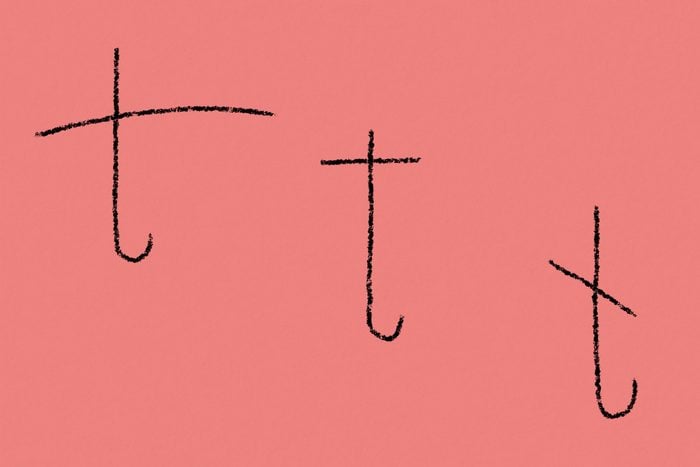
How you cross your T
Crossing Ts with sweeping T-bar strokes is a telltale sign of generosity, according to graphologists. “This is the exuberant giver,” Poizner says. “The left side of the page constitutes the self, and the right side of the page symbolizes the world out there. When that horizontal stroke reaches toward the outer margin like that in a grand, sweeping gesture, this is somebody who wants to extend their energy and resources toward others.”
Traditionally, somebody who crosses a T-bar with a stroke that is placed on the higher end of the T-stem is said to be ambitious—similar to someone whose lines of writing gradually move upward, Poizner says. T-bar crossings that slant downward at a sharp angle, on the other hand, are seen as indicators of the critical person. “That downward stroke usually indicates someone who has a ‘negativity bias,'” Poizner says. “The glass is half empty.”
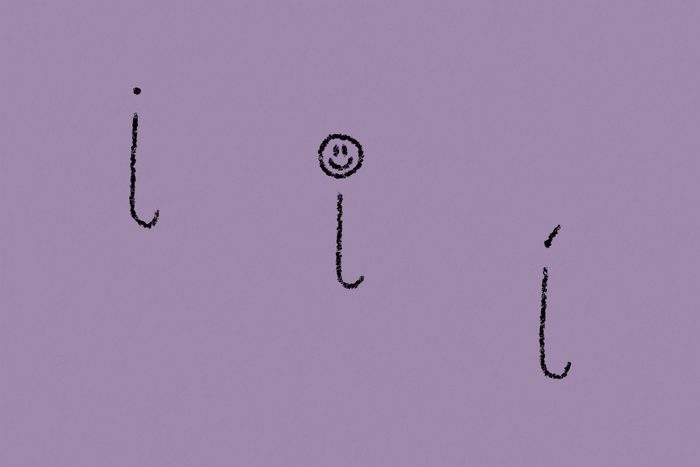
How you dot your lowercase i
Similar to crossing your T, the way you dot a lowercase i can reveal your attention to detail, as well as a sense of rebelliousness. “Look at how the dot is formed,” Poizner says. “Is it a small, precise little dot? [If so, that could be a] potential sign of perfectionism, or somebody who is attentive to details.”
If your dot is a round circle that’s much bigger and/or noticeable—like, if you turn it into a small smiley face—it could be an indicator of your playfulness or a desire for attention, Poizner explains. But if the dot is hastily made with a sharp angle within it—like a checkmark—the writer may be fiery or “prone to irritation and anger.”
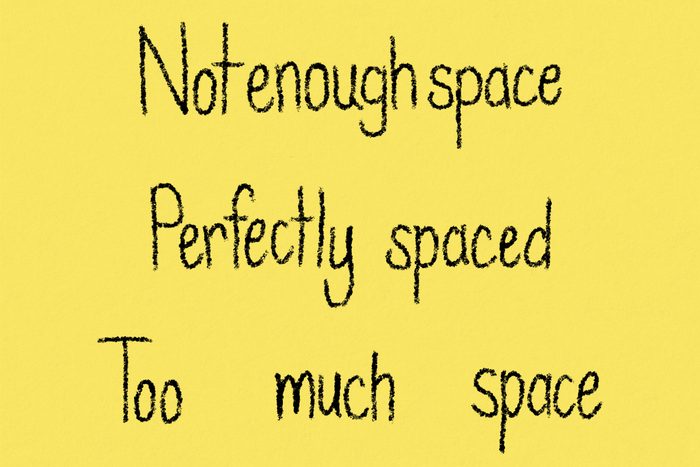
The amount of space between words
In addition to pen strokes and letter formation, experts in handwriting analysis also pay attention to what’s not written on a page—more specifically, the amount of space someone leaves between words. According to Poizner, the standard spacing for handwriting is leaving one character width between each word, the same as when we’re typing.
Writers who leave less than that may crave contact with other people “and can be a bit intrusive and needy,” she notes. On the other hand, those who leave too much space between words may be (figuratively) distant, disconnected or isolated. Last, when people have perfectly spaced handwriting, like Einstein, it “demonstrates their organizational skills and ability to see things in perspective,” Poizner explains.
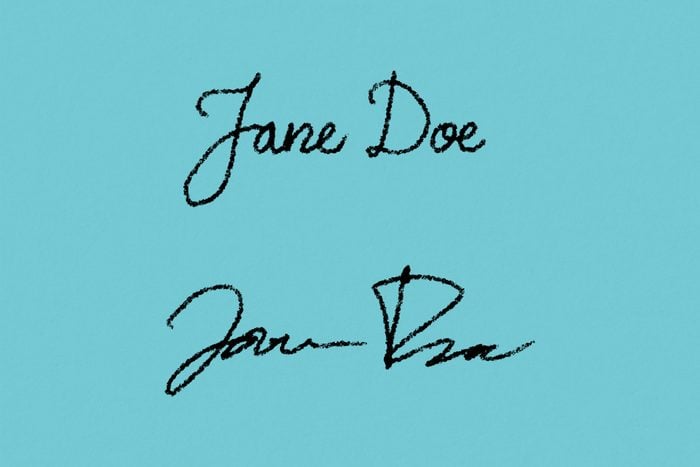
The legibility of your signature
Handwriting analysis aside, our signatures are inextricably linked to our identity. For example, if you have a legible signature, it’s important to you to be clear, communicative and easily read. “This is the conscientious person who perceives the importance of being a member of the collective, with all the norms and expectations involved, so that we all can get along harmoniously,” Poizner explains. “They respect convention.”
If you have an indecipherable signature, you’re harder to read—not only in terms of legibility but also when it comes to insights into your personality. According to Poizner, this may be due, at least in part, to your profession, like if you have a job that requires you to use your signature over and over again, and for the sake of productivity, as well as your own ease and comfort, you adapt your signature to make it simple and quick. “That becomes a variable that influences the handwriting, and it’s not defiance but merely a form of efficiency,” Poizner explains. “In this case, we don’t apply graphology interpretive rules rigidly.”
Perhaps the best-known example of this is doctors’ notoriously terrible handwriting, which, she says, may instead be the product of being unable to keep up with their thoughts as they write. In other cases, however, unreadable autographs are a form of defiance: a demonstration of a person’s attitude toward social norms and conventions. “There are occasions when you are seeing sheer rebelliousness in the illegibility of someone’s signature,” Poizner notes.
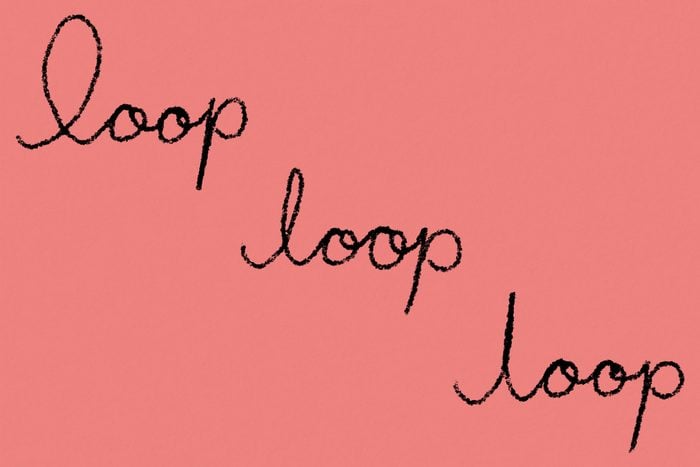
Wide vs. narrow loop on a lowercase L
There’s a lot we can learn from the size of loops, like the lowercase L. “In handwriting, loops are the avenue of emotion,” says Poizner. “The more loopiness, the more warmhearted, expressive, playful, emotional and/or sensitive the writer is.” If the loop is far too large for the letter, though, it could be interpreted as ego sensitivity—someone who is “just a little too easy to wind up or has too many nerve endings, you could say,” she notes.
On the other end of the spectrum, a person who makes their lowercase L with such narrow loops that they’re technically not loops at all, but rather retraced lines, may be self-conscious and prone to retracing their steps. “This person is a little too inhibited,” says Poizner. “Somebody who’s aware of what people are looking at when they are looking at them.”
Finally, handwriting with conventional loops on lowercase L’s may be indicative of conformity. This is a person who is agreeable, cooperative and plays by the rules, according to Poizner.
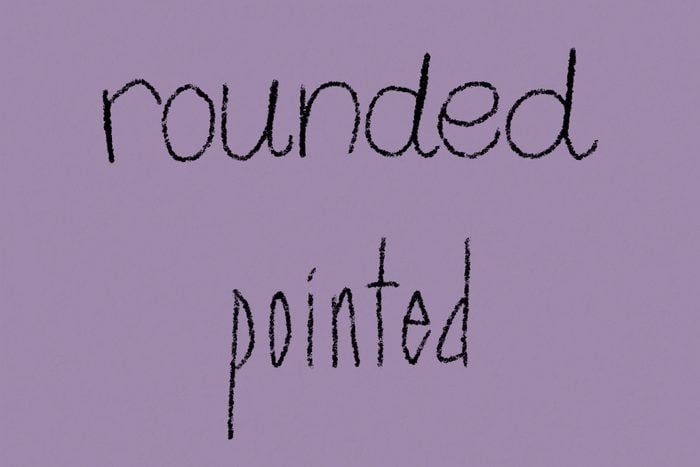
Rounded vs. pointed letters
Rounded handwriting, like loopy letters, conveys emotion. According to Poizner, someone who writes with rounded letters may be more relational, emotionally engaged and agreeable. Pointed letters, on the other hand, are associated with analytical, left-brain processing and may be a sign that the writer is prone to black-or-white thinking.
“Strong angularity may indicate tendencies toward irritability, anger-management issues [and] certainly critical thinking,” she notes. “That person loves to go to a party and have a good political argument.”
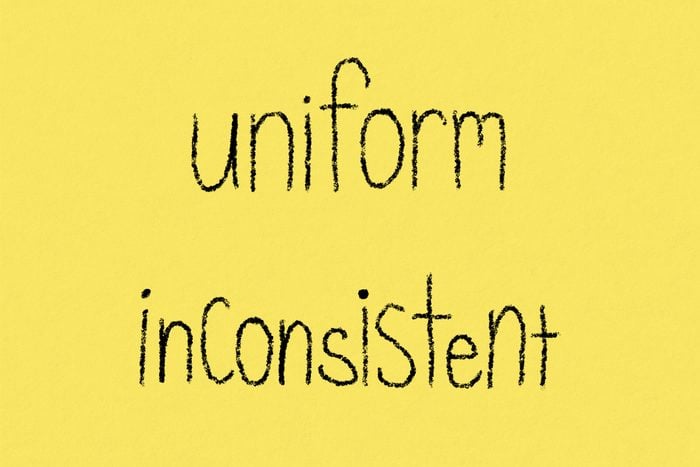
Letters that are mostly uniform in size vs. inconsistent in size
Some people have handwriting so perfect, it could be a font. In that case, the uniformity suggests rigidity, Poizner says—perhaps someone who tends to be obsessive or compulsive.
However, handwriting that’s comfortably consistent—hinting at regularity rather than rigidity—likely comes from someone who is calibrated and balanced. “We want people to have enough self-discipline that they can conform to social norms as necessary, and that includes creating modulated, legible handwriting,” Poizner explains.
Handwriting full of variability in size and other characteristics may be the sign of a modulation problem—something Poizner says likely has implications for the writer’s mood and possibly behavior. “This may be the sensitive person who is highly responsive to stimuli,” she says. “It may be a person who is referred to as ‘psychologically young,’ who is still working through the chaotic emotions of childhood and has not created a singular ego identity—an organized expression of self that would serve as an anchor in the personality. And this is somebody who is potentially chaotic in time and place: coming late, losing things and dropping the ball.”
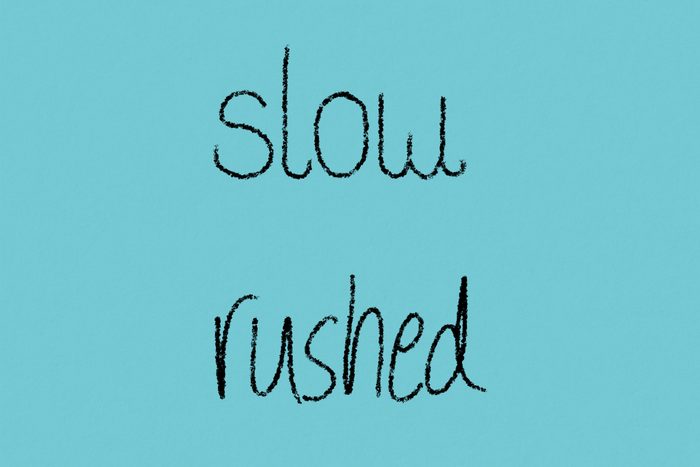
Writing that looks slow and deliberate vs. rushed
Graphologists also consider whether it appears as though someone took their time writing something or was in a hurry. “Someone with slow and deliberate handwriting is a conscientious person who is detail-oriented, prefers a slow process and will not be happy juggling many balls in the air at the same time,” Poizner explains. “We all have our preferred pace, and this individual is like that turtle: Slow and steady wins the race.”
Hasty handwriting, however, can be an expression of intelligence: someone who thinks so quickly that their hand can’t keep up, says Poizner. On the flip side, it can be someone who is poorly organized, impulsive, messy or in possession of poor executive-functioning skills. “It can also be the person who is dynamic and functional,” she notes. “If it’s hurried but also legible, and the spacing is organized, then this is somebody who moves fast but meets obligations and is effective.”
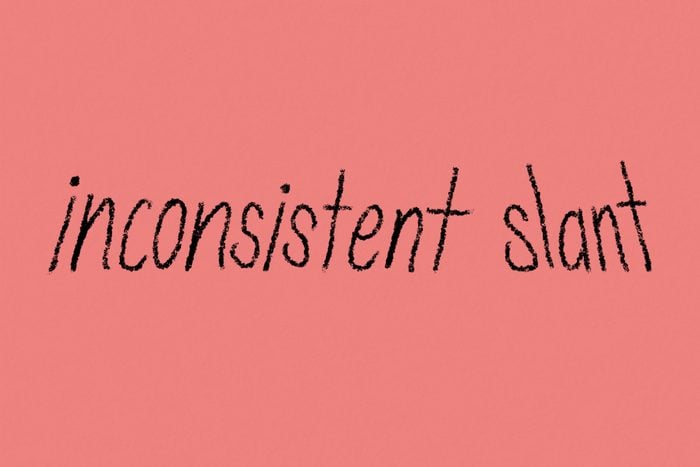
A slant that changes
Similar to handwriting that lacks uniformity in letter and word size, handwriting that slants in different directions over the course of a paragraph or page is a potential sign of a disorganized personality. “When there’s too much variability in a person’s writing, there may also be chaotic elements in their personality,” according to Poizner. “Someone who charges forth and then throws on the brakes suddenly, [causing] whiplash.”
In some cases, slant inconsistency is related to the content. “I had a friend who had issues with her mother,” says Poizner. “She had a right-inclined script, but when she wrote the word mother, all of a sudden you saw that left slant.”
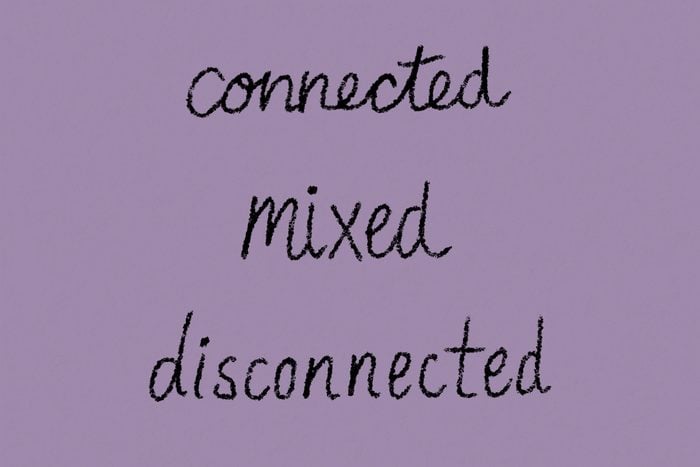
Letters that are connected vs. disconnected
As children, most of us started off printing, then learned how to write in cursive in school around age 7 or 8. Once we reached a point where our penmanship was no longer graded and monitored, we were left to develop our own writing style. The handwriting of someone who continues to use connected letters demonstrates the dominance of logical thinking—”where the person works sequentially to connect related ideas,” says Poizner. It’s also an expression of conforming to social norms: “someone who is conventional, cooperative and appreciates the importance of being predictable, and therefore [does] what they are expected to do.”
According to Poizner, handwriting analysis is a bit trickier when someone writes with letters that aren’t connected, as the interpretation may vary depending on whether the person learned how to write in cursive script in school. For those who did learn penmanship in school, she says that writing with disconnected letters is an expression of independent-mindedness and, potentially, rebelliousness—given that they were taught to connect letters.
There’s also another category: something called “print script,” where the writer uses simplified strokes and a mix of connected and disconnected letters. “This is usually the handwriting of an artist or writer,” Poizner notes. “This writer is highly intuitive and thereby has an innate sense of when it’s most efficient to connect and when it’s most efficient to disconnect. It shows good common sense, ingenuity and creativity.”
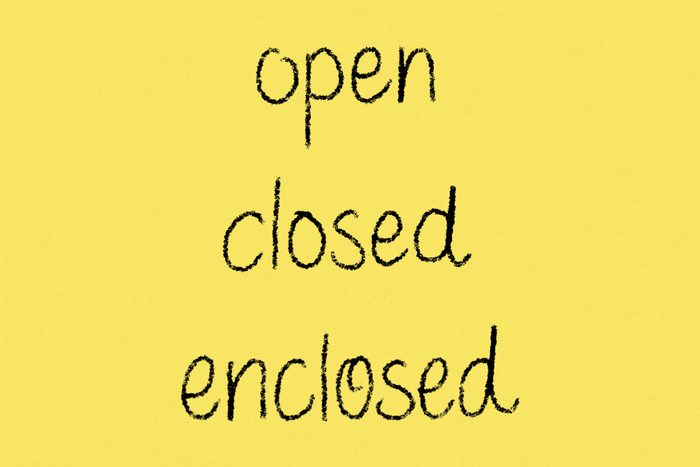
Open vs. closed O
When it comes to the formation of letters, including the letter O, Poizner says that open letters are typically associated with people who have an open personality and talk a lot. “They may also be lenient with themselves—prone to letting themselves off the hook—and may not hold themselves to the standard that has been set,” she adds.
Closed letters, on the other hand, may come from someone who is more tightlipped. “By way of example, if you see the signature of Justin Trudeau, he’s got all sorts of things enclosed in all of those over-elaborated closures,” says Poizner. “Back in 2016, when I got a hold of his signature, I’m on record as describing him as extremely secretive. Since then, he’s constantly had trouble with ethics violations: backroom dealings which then come to light. So when there are closed letters, carefully sealed and even reinforced—but there’s stuff inside the enclosures—this is somebody who has secrets.”
About the expert
- Annette Poizner, MSW, EdD, is a certified graphologist, registered social worker and licensed psychotherapist with a doctorate in education, specializing in counseling psychology. She is the author of Clinical Graphology: An Interpretive Manual for Mental Health Practitioners.
